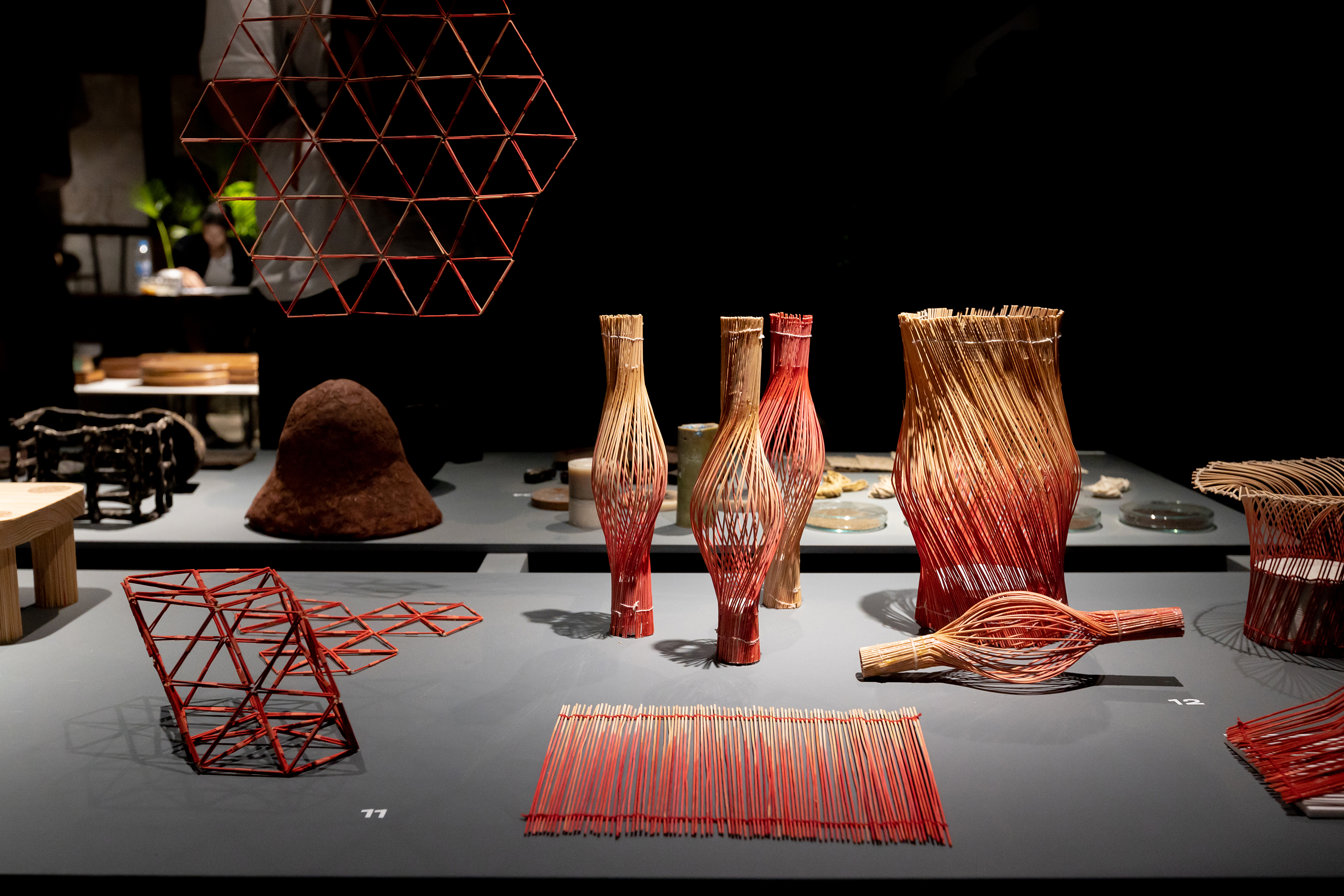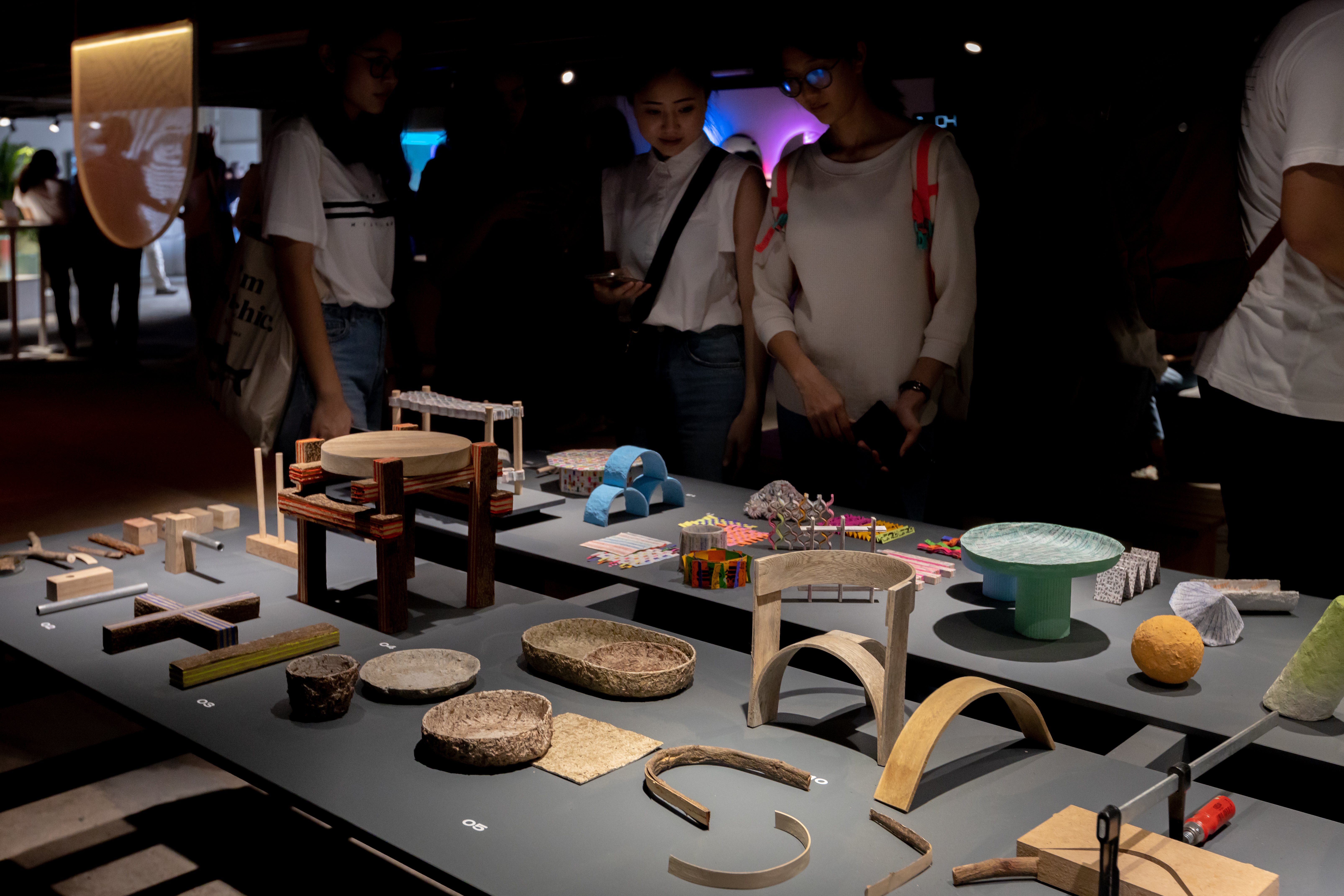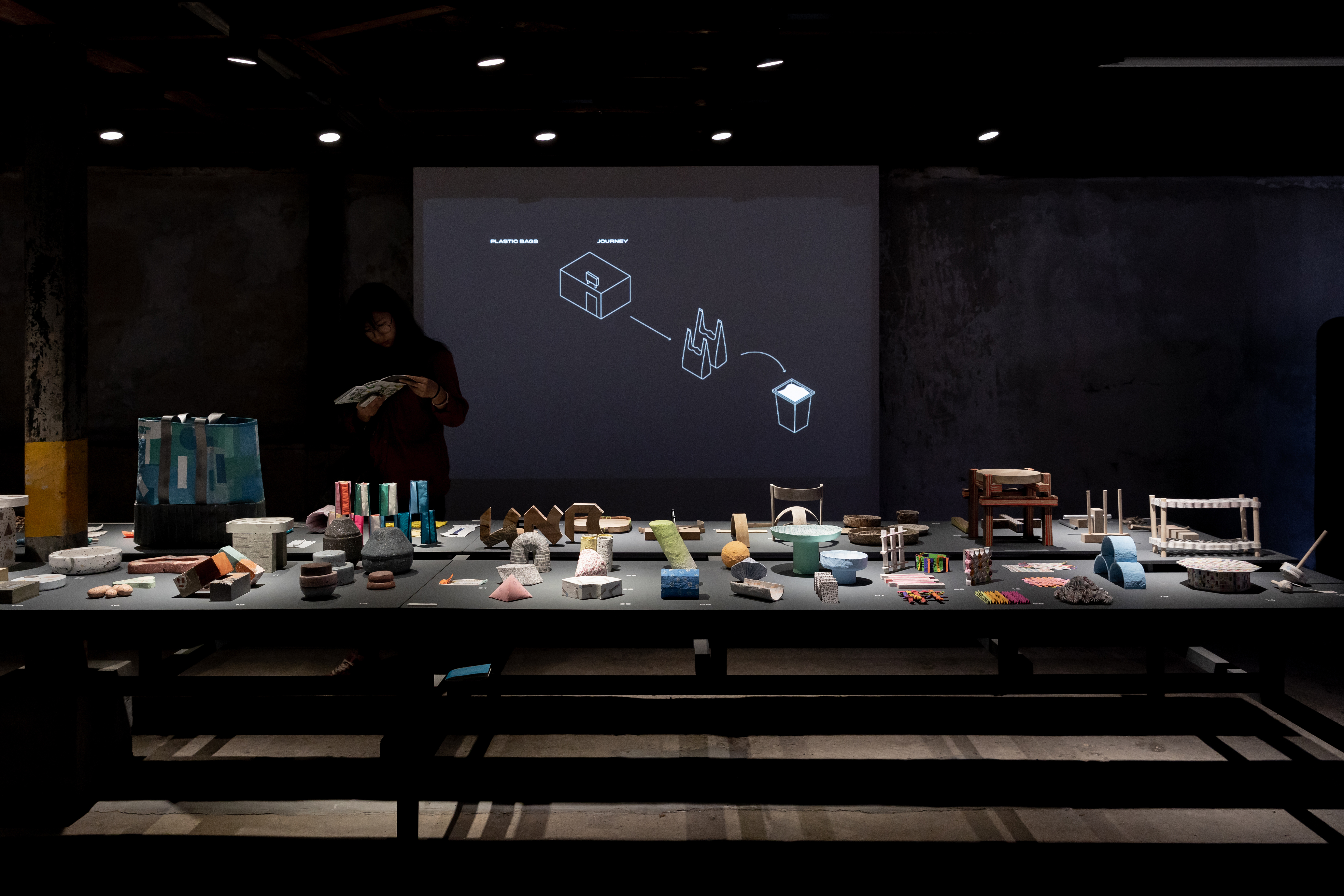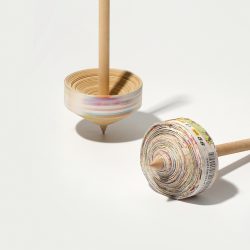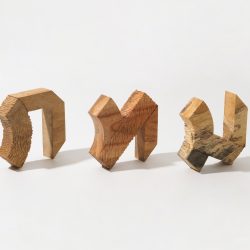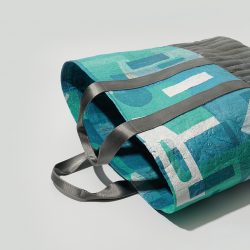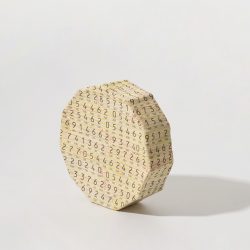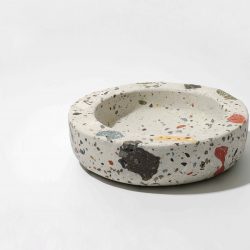THINKK STUDIO IN COLLABORATION WITH STUDIO 150 EXPLORE HOW THE DATA OF WASTE CONSUMPTION IN BANGKOK CAN BRING ABOUT THE NEW DESIGN SOLUTION AND SHIFT THE WAY WE THINK ABOUT ‘MATERIAL’
TEXT: PITI AMRARANGA
CATALOGUE BY STUDIO 150
PHOTO: PISIT PHANOMUPATHAM EXCEPT AS NOTED
(For English, please scroll down)
กรุงเทพฯ มีสิ่งที่เรียกว่าวัตถุดิบในการผลิตเป็นของตัวเองด้วยหรือ? ปกติเราซื้อหาวัสดุสำเร็จรูปตามย่านต่างๆ เพื่อนำมาสร้างผลงาน ซึ่งกรุงเทพฯ ก็ถือเป็นศูนย์กลางในการจำหน่ายวัตถุดิบที่หลากหลายทันสมัยที่สุดแห่งหนึ่งในประเทศไทยเสียด้วย แต่จะเป็นอย่างไรถ้าเราทดลองไม่ใช้วัสดุจากการซื้อหาแต่เปลี่ยนไป “ค้นหา” วัสดุแทน คำถามก็คือกรุงเทพฯ มีหรือไม่ ถ้ามีมันคืออะไร แล้วเอาไปทำอะไรได้บ้างเป็นสิ่งที่เราอยากรู้
CITY MATERIALS คือโครงการสำรวจค้นหาวัสดุใหม่ในมหานครที่สะท้อนอัตลักษณ์ความเป็นกรุงเทพ ดำเนินงานโดย THINKK Studio ร่วมกับ STUDIO 150 จัดแสดงที่โกดังบ้านเลขที่ 1 ตรอกกัปตันบุช ในช่วง Bangkok Design Week 2019 ครั้งที่ผ่านมา เนื้อหาคือการหยิบเอาวัสดุเหลือทิ้งที่จากการบริโภคของคนกรุง จากวัสดุที่ถูกหยิบยกขึ้นมาพิจารณามากมายแต่สุดท้ายตัดให้เหลือวัสดุที่คนกรุงใช้แล้วทิ้งตัวท็อปๆ เช่น กากกาแฟ ถุงพลาสติก กิ่งไม้ ธูป ล็อตเตอรี่ และเศษวัสดุก่อสร้าง คัดเลือกจากการลงพื้นที่โดยทีมงานคนรุ่นใหม่ทั้ง 8 คน ร่วมกันทำหน้าที่เก็บข้อมูลและหาความเป็นไปได้ต่างๆ ในการใช้งานวัสดุ ตัวนิทรรศการนำเสนอกระบวนการทั้งหมดตั้งแต่การคัดเลือกวัตถุดิบ จำแนกส่วนประกอบ และทำการทดลองขึ้นรูปเป็นผลิตภัณฑ์จากมุมมองของนักออกแบบ
ความน่าสนใจของเรื่องนี้อยู่ในรายละเอียดของวัสดุทั้ง 6 ที่ถูกคัดเลือกมาอย่างตั้งใจและมีความหมาย ทั้งหมดสะท้อนพฤติกรรมการกินการใช้ของคนในเมืองได้อย่างน่าติดตาม จากพฤติกรรมการดื่มเอสเปรสโซเย็นสักแก้วที่มาในถุงหูหิ้วพลาสติกหนึ่งใบ ก่อนเดินทางไปไหว้พระเก้าวัด ผ่านพื้นที่ก่อสร้างกับต้นไม้หัวโกร๋นที่เรียงรายอยู่สองข้างทาง และขากลับก็แวะซื้อล็อตเตอรี่เพื่อเสี่ยงโชคสักใบ สิ่งที่เกิดขึ้นหลังจากนั้นคืออะไรเราไม่เคยทราบ เราไม่รู้ว่ากาแฟหนึ่งแก้วผลิตกากกาแฟปริมาณ 8 กรัม เมื่อดื่มพร้อมกันจาก 7,400 ร้านทั่วกรุงเทพฯ ตลอดทั้งวันเราจะมีกากแฟทั้งหมด 3.4 ตัน กองรวมกันจะมีขนาดเท่ากับร้านกาแฟเล็กๆ ได้หนึ่งร้าน หรือการไหว้พระ 9 วัด ที่หนึ่งคนจะใช้ธูปประมาณ 50 ดอก ที่อาจถูกเจ้าหน้าที่จัดเก็บและดับไฟในเวลาไม่ถึง 1 นาที ในกรณีที่มีผู้เข้าสักการะหนาแน่น รวมถึงสลากกินแบ่งรัฐบาลจำนวน 90 ล้านใบ ถูกพิมพ์ใหม่ในทุกๆ สิบห้าวัน ไม่น่าเชื่อว่ากระดาษแผ่นเล็กๆ เมื่อนำมาวางรวมกันมันจะมีขนาดกว้างใหญ่ไพศาลปกคลุมพื้นที่ได้ 173 สนามฟุตบอล ต่อด้วยกิ่งไม้ที่เจ้าหน้าที่เขตตัดแต่งรวมแล้วเป็นปริมาณวันละกว่า 100 คันรถกระบะต่อหนึ่งเขต แล้วยังมีเศษวัสดุจากการก่อสร้างปริมาณมหาศาลที่ไม่ถูกนำกลับไปใช้ใหม่อย่างเช่นพวกเศษอิฐเศษปูน ปิดท้ายด้วยปัญหาใหญ่คือเรื่องถุงพลาสติกที่เราช่วยกันใช้คนละ 8 ใบต่อวัน คูณด้วยจำนวนประชากร 5.58 ล้านคน จะเท่ากับ 44.64 ล้านใบ ในจำนวนนี้มีเพียง 10% เท่านั้นที่ถูกนำกลับมารีไซเคิล (…)
อ่านบทความฉบับเต็มได้ใน art4d No.266

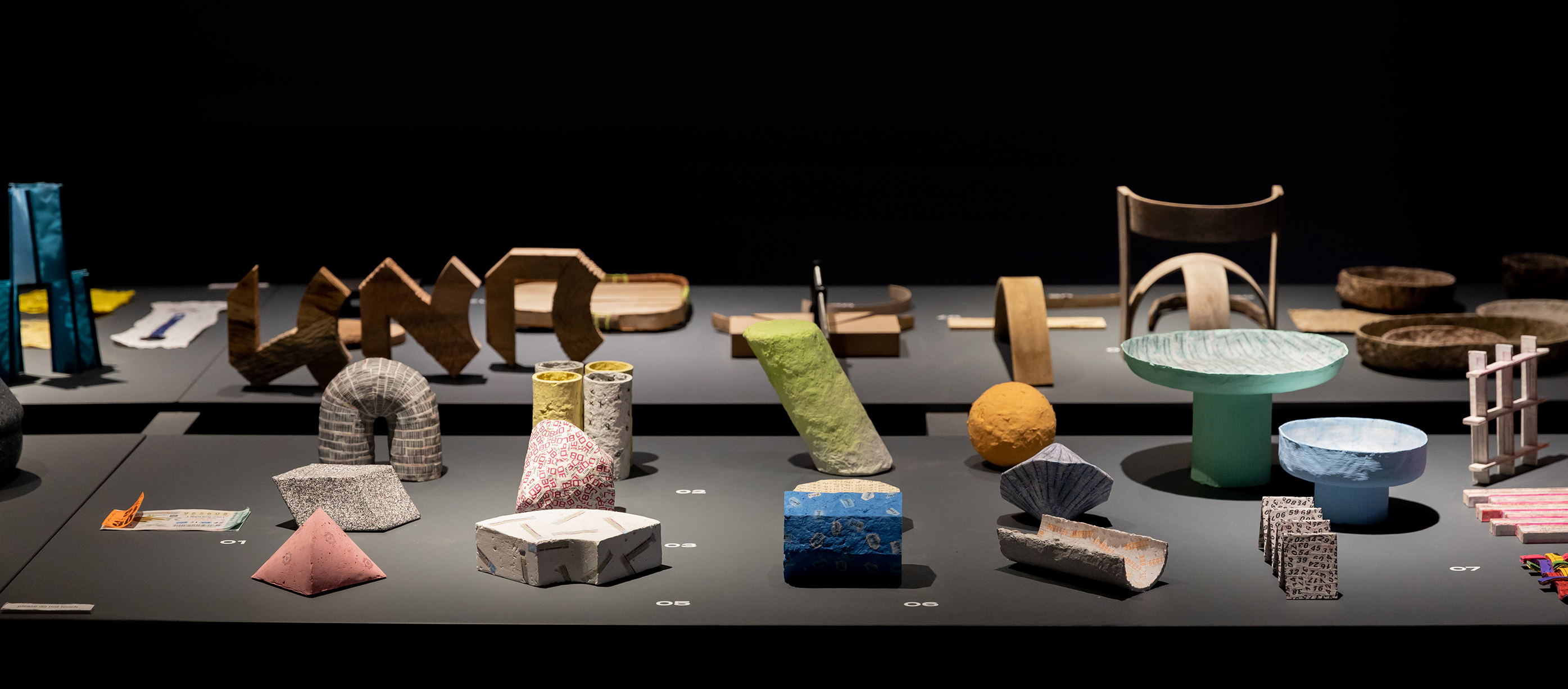
Does Bangkok really have its own raw materials? We can find ready-to-use materials in neighborhoods around the city and no one denies that Bangkok is the largest and most diversified material hub of the country. However, what would happen if we did an experiment of, not buying, but searching for materials. The question is: does Bangkok have a raw material, and if so what it is and what can we do with it?
CITY MATERIALS is the material sourcing project in the city of Bangkok that reflects the unique identity of this vibrant capital city. Operated by THINKK Studio and STUDIO 150, this showcase took place at Warehouse No. 1, Captain Bush Lane during the Bangkok Design Week 2019. The exhibition revolves around the reuse of materials left from the city dwellers’ excessive consumption from: coffee grounds, plastic bags, wood sticks, joss sticks, lotteries and construction scraps. These are directly collected from the sources, by a team of young individuals who work together in collecting data and finding possibilities to recycle the materials. The exhibition presents the entire process from the selection of the raw materials, categorizing the components and developing prototypes of the actual products from their point of views and experiences as designers.
What’s interesting about whole thing is the six materials. Intentionally and meaningfully chosen, they intriguingly reflect the consumption behaviors of Bangkok’s inhabitants. From drinking a cold espresso from a plastic bag with a handle before going on a temple day tour, passing a construction site with dead trees on both sides of the road, making a quick stop at a lottery stand before heading back home. However, we never actually know what happened. We might have never been informed that a cup of coffee produces 8 grams of coffee grounds, so the 7,400 something coffee shops and stands around Bangkok can easily produce up to 3.4-tons worth of coffee grounds a day, which when piled up can be at the size as large as a small coffee shop itself. On a day trip while visiting 9 temples, a person uses about 50 joss sticks, which are taken away by the temple staff less than a minute after they are lit, especially for the famous temples with a large number of visitors. 90 millions pieces of lottery tickets are printed every 15 days, and it sounds unreal when we are informed that those little pieces of paper when laid next to each other can take up the space equal to 173 football fields. Then there are the branches that the city officials cut down from the trees, which amount to 100 pick-up truck loads per one district. Not only that, the city is producing a considerable amount of construction waste, such as scraps of bricks and concrete that aren’t never properly reused. Then there’s the big problem with the use of plastic bags, in which each of us uses the average of 8 bags a day. Times that with 5.58 millions, which are the number of Bangkok’s population, we will have 44.64 million used plastic bags, only 10% of which is being recycled. (…)
Read the full article in art4d No.266


